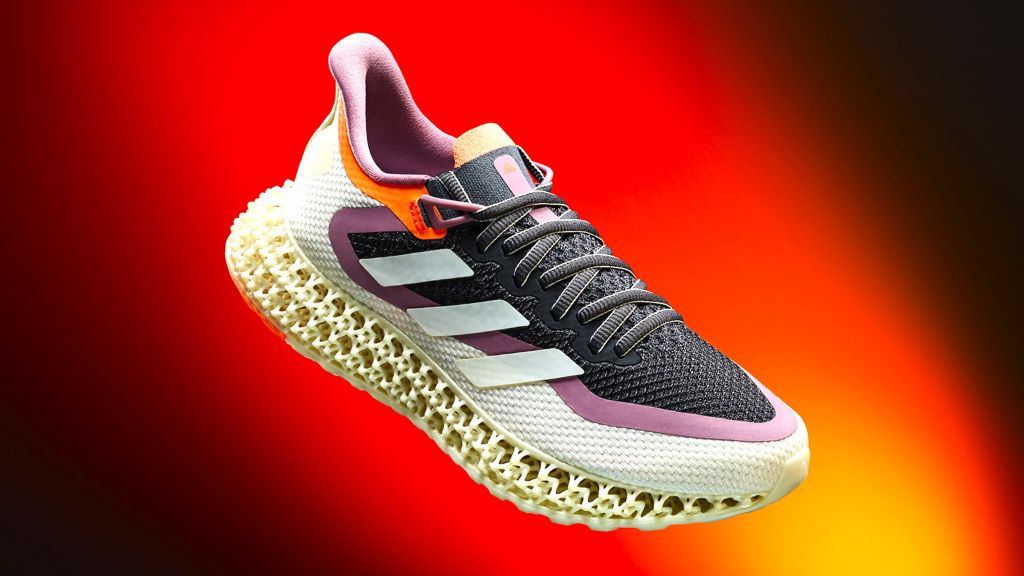3D printed shoes – footwear signals future manufacturing trend

|
Getting your Trinity Audio player ready...
|
3D printed shoes are a great example of where additive manufacturing absolutely lives up to the hype. And following the progress made by sneaker designers such as Adidas, which has built up considerable experience in using 3D printers to make trainers, reveals much about how future products could be manufactured.
In the early days, 3D printing was badged as a rapid prototyping tool. Use cases were one-off parts or mock-ups to double-check that all was well before pulling the trigger on expensive injection molding tooling. But, as Adidas and other leading lights have discovered, the appeal of 3D printing for making shoes and other mass-produced goods goes much further.
One of the biggest misconceptions about 3D printing is that it cannot be used to make products at scale. However, the progress made by Adidas and its additive manufacturing partner Carbon in developing 3D printing shoes for the mass market challenges that.
The rise of printer farms – sometimes referred to by operators as ‘warehouses where the shelves make the product’ – makes it possible for 3D printing to compete with injection molding at high volume. And customers will be surprised by just how many parts that modern 3D printing facilities can deliver.
Naturally, the design should play to the strength of the additive manufacturing process and suit speed-ups – such as having the 3D printer automatically eject the part after completing each build – to hit big numbers.
Today, manufacturing experts will recommend 3D printing to customers wanting up to a million parts a year, and the reasons are more than just cost-parity with injection molding. And this is where it’s useful to pick up a pair of 3D printed Adidas 4DFWD shoes to see the manufacturing appeal up close.

Forward thinking: the 3D printed midsole used in the Adidas 4DFWD features a variable stiffness bow tie lattice that compresses forward to improve running efficiency. Image credit: Adidas.
Trainers often push the design envelope in terms of the combination of shapes and materials. Sneakerheads view trainers as a work of art, and the lattice-based midsole of the 4DFWD is a thing of beauty. It has attractive mechanical properties too.
Designers of high-performance trainers want to be able to vary the stiffness of the midsole along the length of the shoe – providing comfort upon first strike, but without slowing down the athlete. And having lattice geometries greatly widens the range of mechanical properties that are available from a given material.
What’s more, 3D printed shoes open the door to massive customization – for example, lattices could be tailored to individual runners, factoring in differences in weight and stride length – making products more attractive to customers.
Updatable, updatable, updatable
The customization that goes hand-in-hand with 3D printing helps brands too, as they can update their range whenever they choose. Having to make changes to injection molding tools limits the frequency of product updates to maybe just a couple of times a year. But with 3D printing, it’s done in software – once the new file is loaded, you’re good to go.
Manufacturing updates can be applied rapidly too. For example, as Carbon’s research and development team discovered ways to produce the 3D printed Adidas shoes more rapidly and efficiently, those process improvements could be sent seamlessly to the manufacturing facility without the need for any personnel to travel or change parts.
And it’s telling that other brands have joined Addidas in 3D printing shoes. Footwear designs have been walked down the catwalk and some firms – such as Vivobarefoot – are exploring how the innovative shoe manufacturing technology can support a circular economy for trainers.
Being able to print locally and on-demand can shorten supply chains and reduce the amount of unsold product that goes to waste. If circular economy ambitions can be realized on top of that, the future of mass-produced footwear and other 3D printed products could become even more attractive.









